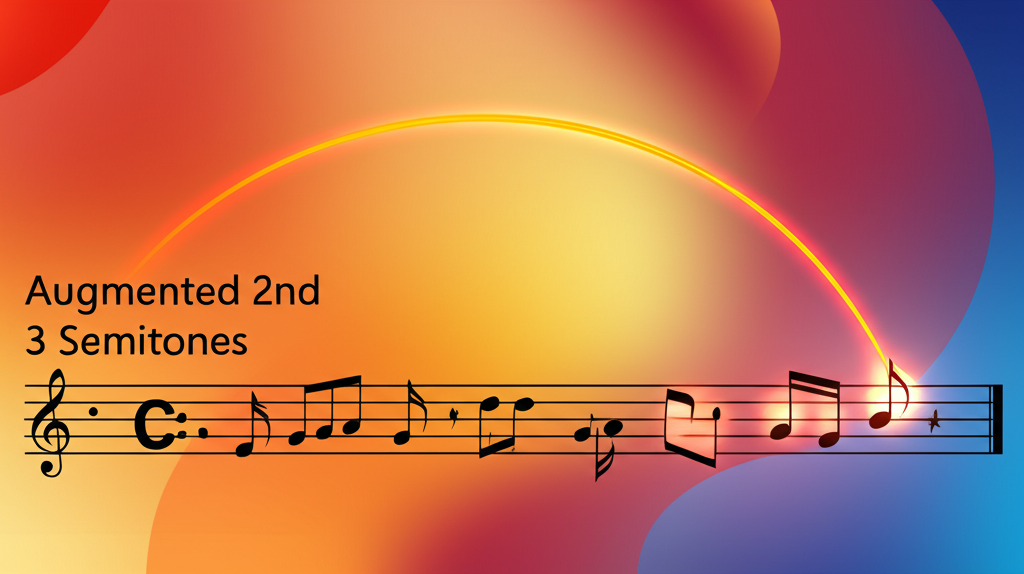
Hungarian Minor Scale - Exotic Colors in Western Music

b4n1
May 17, 2025, 4:26 p.m.
Hungarian Minor Scale - Exotic Colors in Western Music
Summary:
The Hungarian minor scale, also known as the Gypsy minor scale, is an exotic scale that combines elements of the harmonic minor scale with raised fourth degree. Its distinctive sound evokes Eastern European folk music while offering unique possibilities for contemporary composition.
Keywords:
Hungarian minor scale, gypsy scale, exotic scales, Eastern European music, folk scales
Introduction:
The Hungarian minor scale represents a fascinating bridge between Western classical music and Eastern European folk traditions. Its unique interval pattern creates a distinctive sound that has inspired composers from Liszt to modern jazz musicians.
Structure and Characteristics:
The Hungarian minor scale consists of: - Root - Minor second - Major third - Perfect fourth - Perfect fifth - Minor sixth - Major seventh - Octave Interval pattern: 1 2 3♯ 4♯ 5 ♭6 7 8 For example, in A: A B C♯ D♯ E F G♯ A
Examples:
Example in ABC Notation:
Here's the Hungarian minor scale ascending and descending:
Historical Context:
The scale's origins lie in: - Hungarian folk music traditions - Roma (Gypsy) musical heritage - 19th-century classical music's interest in exotic sounds - Franz Liszt's Hungarian Rhapsodies - Béla Bartók's folk music research
Musical Applications:
The Hungarian minor scale is used in: - Eastern European folk music - Classical compositions inspired by folk themes - Jazz improvisation - Film scoring (especially for exotic or mysterious scenes) - World fusion music
Harmonic Implications:
The scale suggests several distinctive chord structures: - Minor tonic with major seventh (AmM7) - Augmented IV chord (D#aug) - Major VI chord with minor seventh (F7) - Diminished ii chord (B°) These harmonies create the scale's characteristic "exotic" sound.
Famous Uses:
Notable pieces using the Hungarian minor scale: - "Czardas" by Vittorio Monti - Various works by Franz Liszt - "Dark Eyes" (Russian/Hungarian Gypsy song) - Modern jazz compositions by Joe Zawinul - Contemporary classical works by Bartók
Practice Approaches:
To master the Hungarian minor scale: - Practice in all keys - Compare with harmonic minor - Study typical melodic patterns - Experiment with chord progressions - Listen to authentic Hungarian folk music
Fun Facts:
- The scale contains two augmented seconds, giving it its distinctive exotic sound - It's sometimes called the "double harmonic minor scale" - The scale is symmetrical around its fifth degree - Many modern metal bands use this scale for its intense sound - The scale is related to the Arabic Hijaz Kar maqam
Conclusions:
The Hungarian minor scale offers a unique tonal palette that bridges Eastern and Western musical traditions. Its distinctive sound has enriched classical, jazz, and world music, making it a valuable tool for composers and improvisers seeking to add exotic colors to their music.
References:
Sárosi, B. (1978). Gypsy Music. Corvina Press.
Bartók, B. (1931). Hungarian Folk Music. Oxford University Press.
Yamaguchi, M. (2006). The Complete Thesaurus of Musical Scales. Masaya Music Services.





